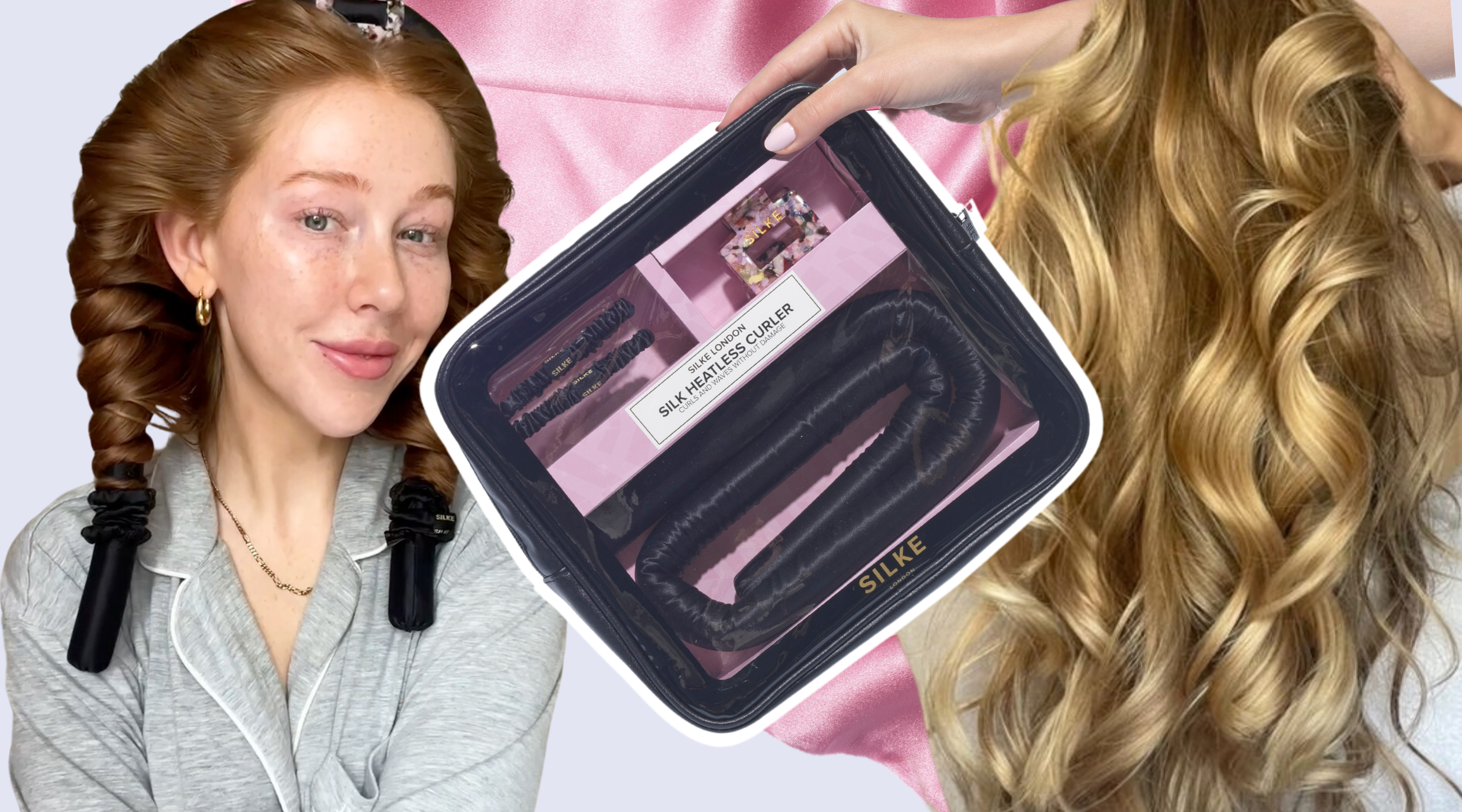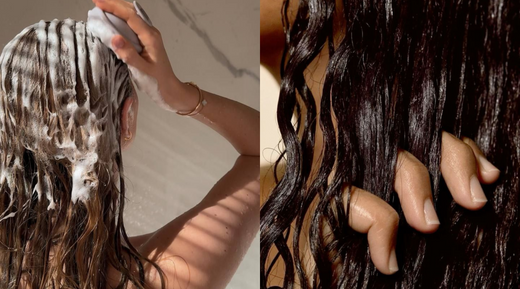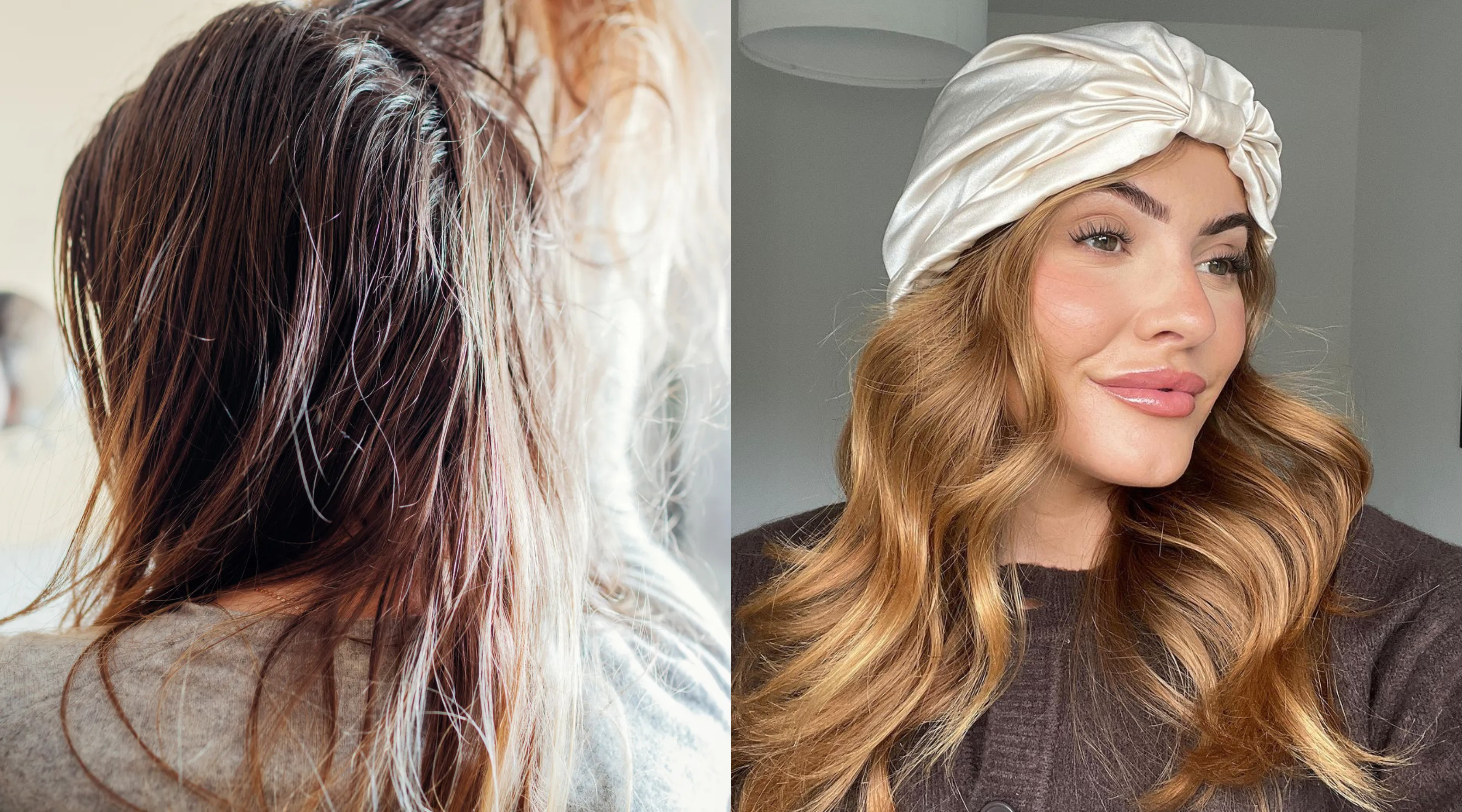
How To Curl Hair With No Damage
At SILKE London HQ we have the privilege of tapping into our co-founder, Maria Sotiriou’s, fountain of expert hair knowledge whenever and wherever we please; you’d be surprised at how many times she includes ‘cut out heat’ or ‘minimise heat’ when responding to our hair queries. The truth is, whether you’re looking to heal damaged hair or prevent damage entirely, cutting down on heat, or removing it from your routine completely, makes for the magic solution no matter how much we don’t want to hear it!
THE EFFECTS OF HEAT ON HAIR
Maria explains: “When we apply heat to our hair, no matter how careful and considered we are, a dehydration process begins. Our hair naturally contains protein, otherwise known as keratin, which is made from disulphide and hydrogen bonds. These bonds maintain the structure of our hair by protecting the cuticle and inner structure of the hair, as well as holding in the hair’s moisture. Without water or moisture, these bonds will essentially break down, resulting in unwanted damage. When heat is applied to the hair, the water the keratin stores can start to evaporate, making hair brittle and more prone to breakage.
Depending on the level of heat applied, the damage can go as far as to break these bonds entirely, which in most cases can’t be fixed. When the heat reaches around 160 degrees, dehydration tends to begin, but when the heat reaches over 200 degrees, the damage caused and water lost, will be irreversible. This type of heat damage is usually caused by using lower amounts of heat regularly, causing a little bit of water loss over time which will eventually disappear entirely. Additionally, by using heated tools that either don’t have adjustable heat settings or are broken, you end up superseding the highest heat tolerance for your hair to be able to hold onto that much-needed hydration.”
When it comes to your heated tools, we’re talking hair straighteners, curling tongs, blow-driers - really anything that applies heat to your hair. Many people believe that by applying a higher level of heat, they will achieve better results, but that isn’t the case. We’re here to spread the word and educate you on how to cut down on your heat consumption so you can reap all the benefits, hit your hair goals and enjoy your dream hair! A little secret: all those hair influencers you see with luscious long, thick, shiny hair - one thing they all have in common is that heat will play a very minimal part of their routine.

SPOTTING HEAT DAMAGE
Spotting heat damage is, in most cases, easy; the hair will have lost its elasticity, and this will result in visible breakage. Breakage is simple to spot, as you can see with the naked eye where your hair is snapping off. The most noticeable spots are usually around the hairline where we tend to repeatedly apply heat over and over, around the ears, and at the nape of the neck. These spots are all quite vulnerable when it comes to damage, but they are also the spots we tend to abuse when it comes to heat and tension.
You may also notice shorter pieces of hair appearing where the hair is breaking midway down the hair shaft. If you haven’t intentionally cut layers into your hair, then this is more than likely breakage due to heat (where the hair has lost its elasticity).
Testing your hair’s elasticity is straightforward. A great way to gauge where your hair is at health-wise is to wet a small amount of hair anywhere on your head, then take a small selection of strands and hold them between your fingers. Place one hand at the mid-lengths, and the other hand towards the ends. Gently pull the hair until it’s taut, then release. If the hair pings back into place the elasticity is good, but if you experience any snapping or breakage then you might need to think about hair repair. This is particularly obvious with any hair that has texture, but it’s just as effective on straight hair too - you just may need to pay a little more attention!
Most people who use too much heat to style their hair are already battling against some kind of texture they don’t like, or the effects of damage that’s already occurred. For example, if you’re already struggling with frizz or strands that have snapped mid-way, causing hair to jut out and not sit how you’d like it to, most people reach for the hot irons to flatten them out. It sounds really daunting when you then tell that person who’s already battling with their hair that they then have to give up what’s currently ‘helping’ them in order to heal their hair; it feels like a catch-22.

SWITCHING TO SILK
This is one of the reasons why Maria was so driven to create a 100% mulberry silk Heatless Curler Kit; she wanted to provide those who wanted to minimise heat, or cut it out altogether, a styling option where they could still enjoy a ‘fresh out the salon’ style blow-dry, whilst skipping the heat damage.
“Silk doesn’t cause any dehydration to hair. It’s an incredible ancient material that gives back to the hair as opposed to taking away from it, unlike other alternative materials. 100% Mulberry 22 momme silk does not absorb moisture from hair, so it’s an obvious choice when it comes to selecting a material to create SILKE products.
If your hair has very low hydration levels, meaning it’s at breaking point and has no flexibility when you perform the elasticity test, wrapping your hair in a circular motion around a hot curler will cause unnecessary tension. Unlike velvet or synthetic satin, this high-grade silk does not have microscopic claws, which is why it is so smooth. When your hair is wrapped around a SILKE London Heatless Curler, the silk smooths down the cuticles, allowing moisture to be retained within the hair, resulting in hydrated, shiny, bouncy, soft and supple curls. The complete opposite happens when the curler is velvet, satin, or a robe belt. All of these materials have microscopic claws and are dehydrating materials. When these tools and materials are used on the hair over time it’ll become more dehydrated, will frizzy quickly, and your curls won’t last as long. They’ll also be less shiny, less bouncy and generally not as soft.”
Of course, it’s not a realistic option for everyone to completely cut heat altogether. In this instance, Maria always recommends a concentrated use of heat and then switching a big focus on your haircare routine and retaining the style. For example, instead of leaving your damaged hair to air dry, and then fighting against frizz each morning with heated irons, you should put the time, effort, and heat into a proper blow-out and styling to then utilise the Heatless Curler Kit or Hair Wrap to maintain and ‘top up’ the styling with zero heat until it comes time for your next hair wash day.
If this is the option for you, Maria strongly recommends picking up a great quality heat protection product to use each time you blow-dry and style, she explains:
“There are two types of heat protectants: spray and cream. If you’re styling your hair from wet, I prefer a cream lotion as it is possible to achieve 100% even coverage. Sprays are good too, because they’re easier to apply when hair isn’t wet. However, it’s important to be thorough and spray your hair in sections for the best coverage!”

THE TAKEAWAY
Overall, it’s not impossible to repair your hair from heat damage if it hasn’t reached the point of no return. Maria says:
“To repair damage from heat, you want to focus on keeping your hair hydrated as much as possible. Obviously, avoid heat as much as possible using the methods I’ve recommended, but I would also avoid too many cleansing products. Prioritise increasing the time you spend doing hair masking routines and oil treatments, I recommend working these into your routine as a pre-hair wash step. Having a thorough haircare and wash routine, cocktailed with wearing a SILKE Hair Wrap nightly to lock in hydration and prolong your styling, you can’t go wrong!”
Follow us on Instagram and TikTok @silkelondon for more tips to help improve your hair health.
Love, SILKE xo









Leave a comment
This site is protected by hCaptcha and the hCaptcha Privacy Policy and Terms of Service apply.